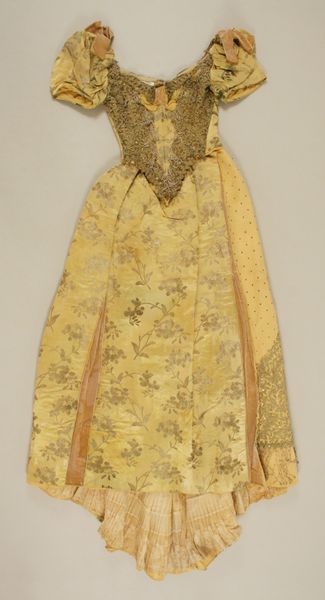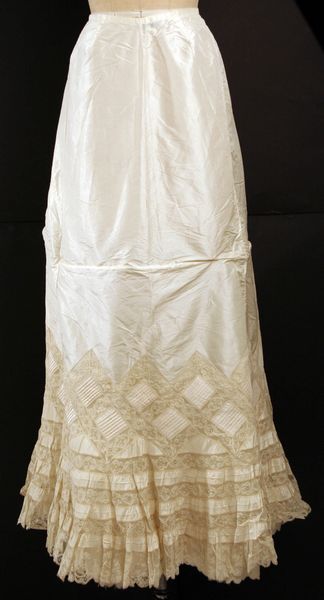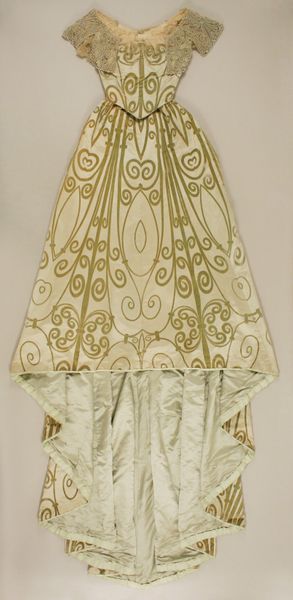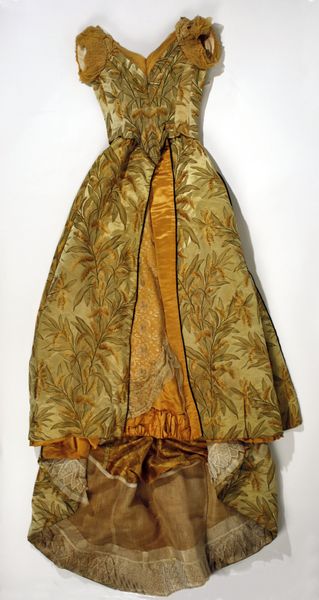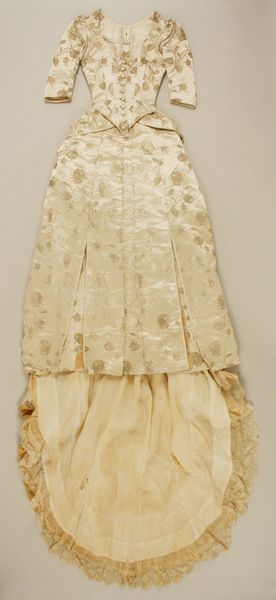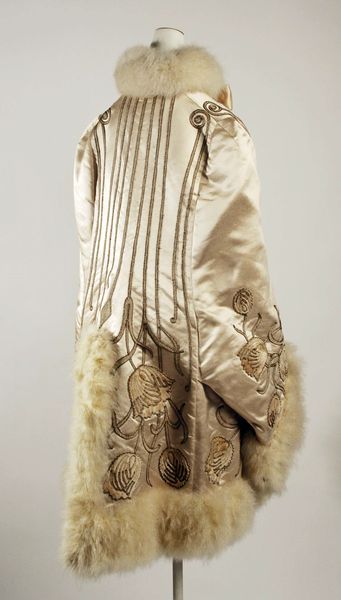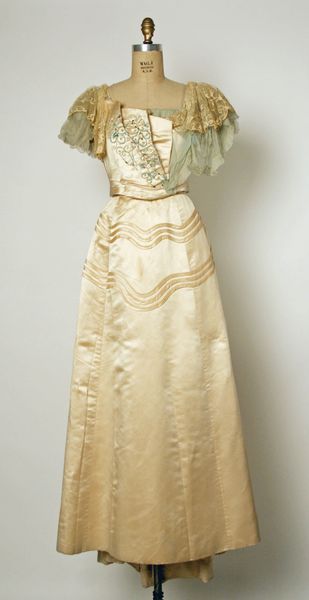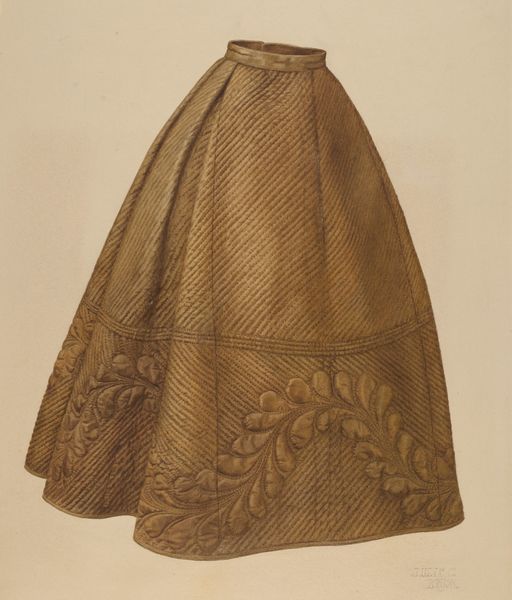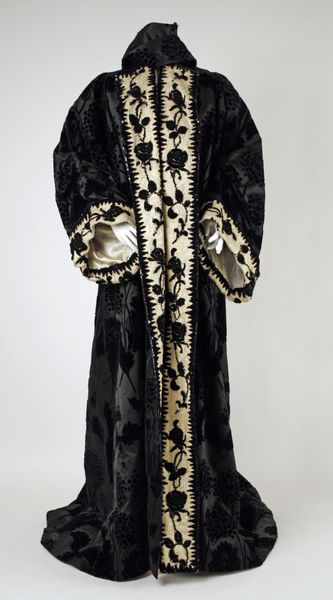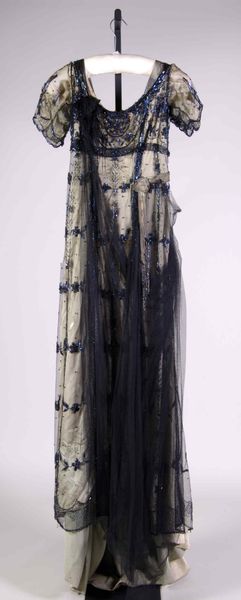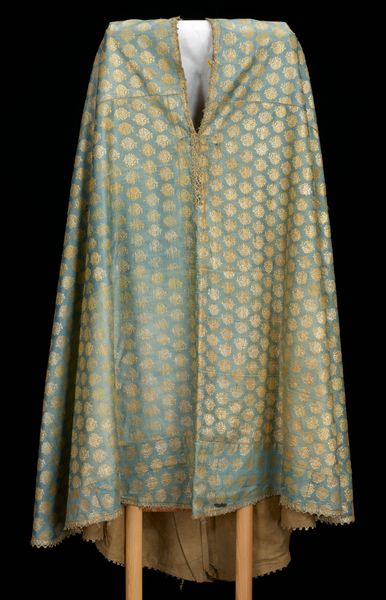
silk, weaving, textile
#
silk
#
arts-&-crafts-movement
#
weaving
#
textile
#
fashion and textile design
#
wearable design
#
costume
#
textile design
#
decorative-art
#
clothing design
Copyright: Public Domain
Editor: Here we have the "Opera Cape" crafted sometime between 1894 and 1904, made of silk and other textiles, and designed by the House of Worth. I’m really struck by the combination of that bold, repeating floral pattern with the delicate lace at the collar. It’s almost like two different eras coexisting. How do you see this piece in relation to its historical moment? Curator: It’s interesting you point that out. House of Worth was at the height of its influence during this period, dressing European royalty and the elite. The Arts and Crafts movement was gaining momentum. Consider how the burgeoning middle class desired access to luxurious garments that demonstrated one's awareness and social standing. How might we analyze the impact that rapid manufacturing advancements played at that time? Editor: So, was it attempting to bridge a gap between hand-crafted luxury and something more…accessible? Curator: Precisely. The floral pattern, although intricate, hints at machine-made repetitions, whereas the lace embellishments at the top might reflect a more hand-crafted aesthetic. By exploring the convergence between them, and its textile features, we see this “Opera Cape” in context to larger historical processes. I ask you, what social forces do you think are relevant here? Editor: The rise of department stores perhaps? Making fashion more readily available to those who could afford it, but also changing the way people consumed goods and fashion? Curator: Exactly. It speaks to a changing social landscape. A tension between exclusivity and a democratization of luxury through mechanized processes. That tension, visualized in silk and lace, offers insight into a fascinating era. Editor: That's fascinating. Now I see that it's not *just* beautiful. Curator: Agreed, understanding these contexts transforms our perception of material culture, connecting art to the broader historical narratives it inhabits.
Comments
No comments
Be the first to comment and join the conversation on the ultimate creative platform.
